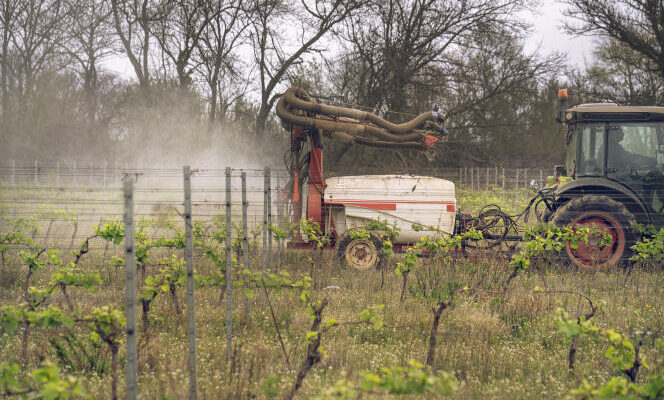Unlike the three previous versions, the new Ecophyto 2030 plan, which announces a “50% reduction in pesticides” in agriculture, should easily achieve its objectives. But at the cost of a change of indicator, which will no longer measure the real drop in the use of phytosanitary products, beyond the withdrawals of the most problematic molecules provided for by European regulations.
Marc Fesneau, the Minister of Agriculture and Food Sovereignty, presenting the plan on France Info and in The Parisian Friday May 3, in fact ratified the abandonment of the pesticide use indicator, the NODU (“number of unit doses”). It is replaced by a new, controversial indicator, based on the tonnages of products used, modulated by their regulatory status.
The hypothesis of maintaining the NODU alongside this new metric had not until now been ruled out: it is now excluded, in accordance with the requests of the National Federation of Farmers’ Unions. The new plan, which must be officially presented on May 6 but whose The world was able to consult the latest version, aims by 2030 for a 50% reduction in this new index, called HRI-1 (“Harmonized Risk Indicator 1”) compared to the 2011-2013 period. But, unlike the NODU, the HRI-1 is not a usage index.
Optical illusion
In fact, in a pre-publication made public on May 3, around twenty researchers and engineers from universities and public research organizations – including a majority of members of the scientific council of the Ecophyto plan – show that HRI-1 is a sham. Not only, they write, the new index “is not intended to strictly quantify the use of plant protection products and adequately reflect changes in their use”but “it does not reflect the risks involved” by these uses.
For Corentin Barbu, researcher at the National Research Institute for Agriculture, Food and the Environment, one of the main French experts on pesticide use indices, “the acceptance of the HRI as a reference indicator signals the end of efforts to reduce pesticides”.
To illustrate the bias of the new index, the authors calculate the HRI-1 for the year 2021: this has already fallen by 32.9% compared to the reference period (2011-2013). The objective of a 50% reduction in the new index is therefore already almost met, while the total tonnage of pesticides sold in France has continued to grow and their use indexed by the NODU has remained almost stable during the same period. .
You have 63.39% of this article left to read. The rest is reserved for subscribers.
